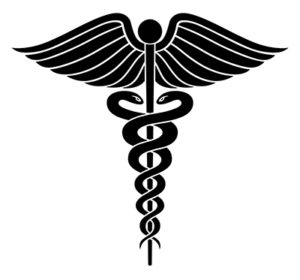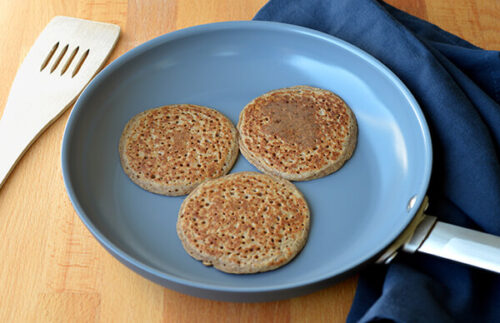What Next, Bill Clinton?
Former President William Jefferson Clinton underwent quadruple coronary artery bypass surgery on Monday, September 6, 2004 – Labor Day – a holiday – three days after suffering from chest pains and shortness of breath. The day after he reported these symptoms, and two days before his surgery, I wrote him a letter encouraging him to take some time to think carefully about his decision before he committed to that life-changing experience. Letter to Bill Clinton. Obviously, my message did nothing to slow the conveyor belt to the operating room.
Fortunately, he survived, as do 96% to 98% of patients. If you were to believe some of the stories in the newspapers, you might think he is now cured of his heart disease with his new ‘detour arteries’ in place. The truth is they have done nothing to affect the ‘killing part of the disease’ – the small volatile lesions lining ALL his arteries, not just the ones that were repaired. These are the red-hot, angry, pustules that burst and then form an occluding blood clot – they are below the detection threshold of an angiogram; and elude the efforts of the highly trained, well-intentioned surgeons.1-3
So, nothing has really changed for Bill Clinton – he is at the same risk of dying of heart disease as he was before his operation – and that is exactly what all three major studies comparing bypass surgery with simple medical care (no surgery) show.4-8 There are no future studies planned; therefore, nothing on the horizon will change the well-established fact that bypass surgery is a life-prolonging disappointment.
Over the next 10 years Mr. Clinton faces a 31% chance of a serious cardiac-related event, and about a 20% chance of dying.9-10 He is likely to have suffered a decrease in mental capacity, although his doctors made every effort to minimize the discussion, and thus avoid media attention, of this common complication. His family may notice disturbing personality changes caused by him having been on the heart-lung machine.
 A ‘Teaching Moment’ Missed
A ‘Teaching Moment’ Missed
Patients after bypass surgery awake with pain and fear – and a strong desire to never again repeat that experience. I have heard people say ‘I would eat cardboard in order to avoid another bypass.’ At this moment they are most willing to listen to ‘the good news’ about a healthy diet, but they rarely get a chance to hear it. Although Mr. Clinton’s first meal after surgery was not described, his hospital, New York-Presbyterian, does boast of having a gourmet chef and a concierge service. The first food after bypass surgery is often ‘a reward meal’ for surviving the operation – most likely the very foods that brought the heart victim to the brink of death in the first place – possibly poached eggs with a side of bacon or a juicy steak. This indulgent message says to the patient, ‘High-fat, high-cholesterol, animal-based foods had nothing to do with your past hours of physical, mental, and emotional torment. Eat up; we can solve all your future problems with pills and more surgery.’
Proper Post-operative Care for Mr. Clinton
Although ‘You have to watch your diet now’ is commonly recommended as the patient leaves the hospital, worthwhile education is rarely given. Instead, patients receive bottles full of prescribed pills and capsules – beta-blockers (Toprol XL), ACE inhibitors (Zestril), statins (Lipitor), and blood-thinners (Plavix) – costing hundreds of dollars a month. You might come to believe your heart trouble originated from a ‘pill deficiency.’ A profitable, but wrong, communication. The right message from educators who are dedicated to your never needing to visit a hospital again is for you to eliminate the cause of your artery closure – the American Diet.
The damage to a person’s arteries – both the original ones and the new ones inserted during the surgery – continues unchecked. The rate of closure is directly related to the patient’s blood cholesterol level.20-21 Of course, diet is the safest, cheapest, and most effective way to lower blood cholesterol – and the right diet will keep the arteries open and actually reverse the disease (atherosclerosis).22 Furthermore, the same diet safely thins the blood, preventing future blood clots, and heals other conditions common to heart patients, like obesity, high blood pressure, diabetes, high triglycerides, uric acid, constipation and indigestion – cost-free – a deal too good to bypass up.
Recent research shows that a healthy diet (10% fat), and enough cholesterol-lowering medication to lower the total cholesterol below 140 mg/dl (LDL-cholesterol below 75 mg/dl), reduces the risk of future cardiac (heart) events from 31% to 7% over the next 5 years.23 Although most doctors routinely use statins to prevent future heart problems, serious diet improvement is not part of their prescription.24 (You can learn much more about how to reverse heart disease and avoid the fate of Bill Clinton by reading my June 2003 newsletter article: Cleaning out Your Arteries, found at www.drmcdougall.com.)
My Full Dose Prescription for Bill Clinton
When it comes to your life, Mr. Clinton, there is no room for moderation – you are worthy of a full dose of medication – the amount that will cure you. The time has come for you to declare to yourself and the world that, ‘I have feasted enough for a lifetime. I have had more rich food than 99.9999% of people who have ever walked this earth – one more cheeseburger is not worth dying for.’ Your new diet will consist of delicious and nutritious starch-based meals – like oatmeal and pancakes for breakfast, minestrone soup and vegetable burgers for lunch, and for dinner: bean burritos, spaghetti and marinara sauce and mu shu vegetables over rice. My wife Mary has designed and published over 2000 healthy recipes for you and Hillary to enjoy.
You will also walk daily and give up those famous cigars. Your medications will be one baby aspirin a day, and if necessary, sufficient cholesterol-lowering medication (statins) to lower your total cholesterol below 150 mg/dl and your ‘bad’ LDL-cholesterol below 80 mg/dl. You deserve no less and to do otherwise could deprive the world of a great leader. Write or call me anytime that I can be of further help.
(A more thorough discussion of information on your heart and arteries is found in ‘The McDougall Program for a Healthy Heart’ book, which can be found in bookstores and libraries, or ordered from our web site at www.drmcdougall.com.)
References:
1) Gutstein DE, Fuster V. Pathophysiology and clinical significance of atherosclerotic plaque rupture. Cardiovasc Res. 1999 Feb;41(2):323-33.
2) Kullo IJ. Vulnerable plaque: pathobiology and clinical implications. Ann Intern Med. 1998 Dec 15;129(12):1050-60.
3) Zhou J. Plaque pathology and coronary thrombosis in the pathogenesis of acute coronary syndromes. Scand J Clin Lab Invest Suppl. 1999;230:3-11.
4) Eleven-year survival in the Veterans Administration Randomized Trial of Coronary Bypass Surgery for Stable Angina. The Veterans Administration Coronary Artery Bypass Surgery Cooperative Study Group. N Engl J Med 311:1333, 1984.
5) Alderman E. Ten Year Follow-Up of Survival and Myocardial Infarction in the Randomized Coronary Artery Surgery Study. Circulation 82:1629, 1990.
6) Caracciolo EA, Davis KB, Sopko G, Kaiser GC, Corley SD, Schaff H, Taylor HA, Chaitman BR. Comparison of surgical and medical group survival in patients with left main coronary artery disease. Long-term CASS experience. Circulation. 1995 May 1;91(9):2325-34.
7) Caracciolo EA, Davis KB, Sopko G, Kaiser GC, Corley SD, Schaff H, Taylor HA, Chaitman BR. Comparison of surgical and medical group survival in patients with left main equivalent coronary artery disease. Long-term CASS experience. Circulation. 1995 May 1;91(9):2335-44.
8) Varnauskas E. The European Coronary Surgery Study Group: Twelve-year follow-up in the randomized European Coronary Surgery Study. N Engl J Med 319:332, 1988.
9) Tavilla G, Kappetein AP, Braun J, Gopie J, Tjien AT, Dion RA. Long-term follow-up of coronary artery bypass grafting in three-vessel disease using exclusively pedicled bilateral internal thoracic and right gastroepiploic arteries. Ann Thorac Surg. 2004 Mar;77(3):794-9;
10) Acinapura AJ, Rose DM, Cunningham JN, Jacobowitz IJ, Kramer MD, Zisbrod Z. Internal mammary artery bypass: effect on longevity and recurrent angina pectoris in 2900 patients. Eur J Cardiothorac Surg. 1989;3(4):321-5;
11) Ahonen J, Salmenpera M. Brain injury after adult cardiac surgery. Acta Anaesthesiol Scand. 2004 Jan;48(1):4-19.
12) Zimpfer D, Czerny M, Vogt F, Schuch P, Kramer L, Wolner E, Grimm M. Neurocognitive deficit following coronary artery bypass grafting: a prospective study of surgical patients and nonsurgical controls. Ann Thorac Surg. 2004 Aug;78(2):513-8.
13) Newman MF, Kirchner JL, Phillips-Bute B, Gaver V, Grocott H, Jones RH, Mark DB, Reves JG, Blumenthal JA. Longitudinal assessment of neurocognitive function after coronary-artery bypass surgery. N Engl J Med. 2001 Feb 8;344(6):395-402.
14) Aberg T, Ronquist G, Tyden H, Ahlund P, Bergstrom K. Release of adenylate kinase into cerebrospinal fluid during open-heart surgery and its relation to postoperative intellectual function. Lancet. 1982 May 22;1(8282):1139-42.
15) Snyder-Ramos SA, Gruhlke T, Bauer H, Bauer M, Luntz AP, Motsch J, Martin E, Vahl CF, Missler U, Wiesmann M, Bottiger BW. Cerebral and extracerebral release of protein S100B in cardiac surgical patients. Anaesthesia. 2004 Apr;59(4):344-9.
16) Henriksen L. Evidence suggestive of diffuse brain damage following cardiac operations. Lancet. 1984 Apr 14;1(8381):816-20.
17) Henriksen L, Hjelms E, Lindeburgh T. Brain hyperperfusion during cardiac operations. Cerebral blood flow measured in man by intra-arterial injection of xenon 133: evidence suggestive of intraoperative microembolism. J Thorac Cardiovasc Surg. 1983 Aug;86(2):202-8.
18) Herrmann M, Ebert AD, Galazky I, Wunderlich MT, Kunz WS, Huth C. Neurobehavioral outcome prediction after cardiac surgery: role of neurobiochemical markers of damage to neuronal and glial brain tissue. Stroke. 2000 Mar;31(3):645-50.
19) Snyder-Ramos SA, Gruhlke T, Bauer H, Bauer M, Luntz AP, Motsch J, Martin E, Vahl CF, Missler U, Wiesmann M, Bottiger BW. Cerebral and extracerebral release of protein S100B in cardiac surgical patients. Anaesthesia. 2004 Apr;59(4):344-9.
20) Campeau L, Enjalbert M, Lesperance J, Bourassa MG, Kwiterovich P Jr, Wacholder S, Sniderman A. The relation of risk factors to the development of atherosclerosis in saphenous-vein bypass grafts and the progression of disease in the native circulation. A study 10 years after aortocoronary bypass surgery. N Engl J Med. 1984 Nov 22;311(21):1329-32.
21) Bourassa MG, Enjalbert M, Campeau L, Lesperance J. Progression of atherosclerosis in coronary arteries and bypass grafts: ten years later. Am J Cardiol. 1984 Jun 15;53(12):102C-107C.
22) McDougall J. The McDougall Program for a Healthy Heart. Plume, 1998.
23) Sdringola S. Combined intense lifestyle and pharmacologic lipid treatment further reduce coronary events and myocardial perfusion abnormalities compared with usual-care cholesterol-lowering drugs in coronary artery disease. J Am Coll Cardiol. 2003 Jan 15;41(2):263-72.
24) Lazar HL. Role of statin therapy in the coronary bypass patient. Ann Thorac Surg. 2004 Aug;78(2):730-40.
Recommended Articles

How to Cook Beans

Working with MDs





